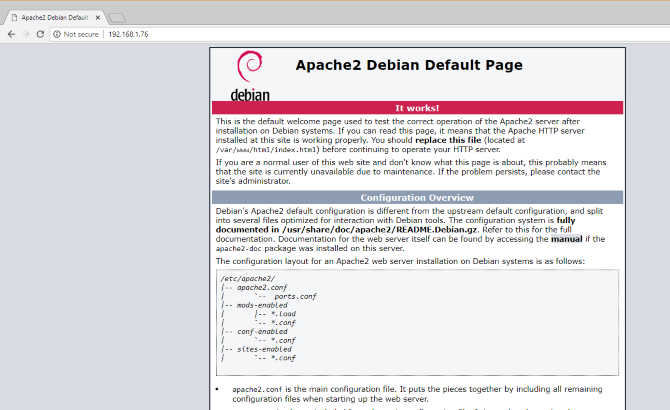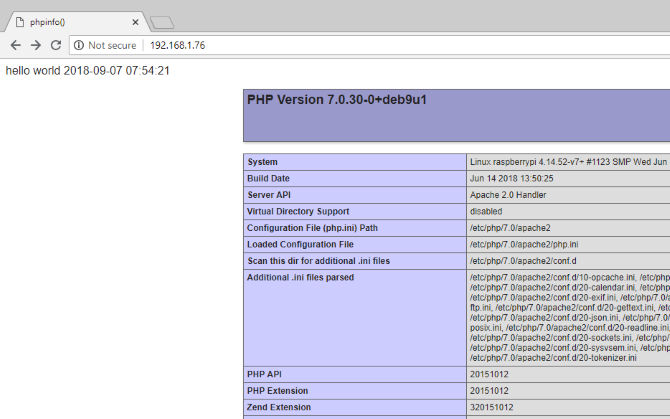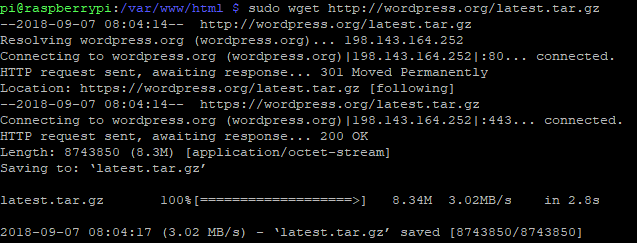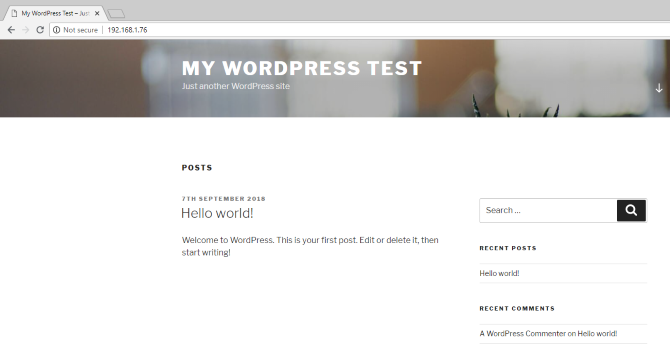Saudi Arabia 'hacked Amazon boss's phone', says investigator
from BBC News - Technology https://ift.tt/2JT8IAx
Dan Bilefsky / New York Times:
A profile of AI pioneer Yoshua Bengio, a co-recipient of the 2018 A.M. Turing Award, who says he supports regulating AI, including a ban on “killer robots” — MONTREAL — Yoshua Bengio is worried that innovations in artificial intelligence that he helped pioneer could lead to a dark future …
Anna Hensel / Digiday:
A look at Pinterest's efforts to position itself as the platform at the top of the purchasing funnel, challenges with the “buy button”, ads, and visual search — Pinterest's imminent IPO raises new questions about how big of a role the platform will play in the future of social commerce.
Gavin De Becker / The Daily Beast:
Jeff Bezos' security chief says his investigation concluded with high confidence that Saudi Arabia “had access to Bezos' phone, and gained private information” — The National Enquirer's lawyer tried to get me to say there was no hacking. — For 40 years, I've advised …
Kana Inagaki / Financial Times:
Line names founder Shin Jungho as co-CEO to drive the Asian chat app's expansion from ads into payments, banking, and other fintech businesses — Mark Zuckerberg recently outlined a strategy that would see the future of Facebook in private messaging. Shin Jungho, the reclusive founder …
Mark Zuckerberg / Washington Post:
Mark Zuckerberg calls for global regulations in four areas: policing harmful content, election integrity, a GDPR-like privacy framework, and data portability — Mark Zuckerberg is founder and chief executive of Facebook. — Technology is a major part of our lives, and companies such as Facebook have immense responsibilities.
Will Oremus / Slate:
How a 119-word local crime brief amassed more than 800K Facebook shares, nearly twice as many as any other piece of English-language content this year so far — A tale of accidental virality in the age of algorithms. — On an otherwise ordinary Sunday in late January …
Andrew Liptak / The Verge:
Sheryl Sandberg says Facebook is exploring restrictions on who can go Live depending on factors such as prior Community Standard violations after Christchurch — Facebook Chief Operating Officer Sheryl Sandberg outlined three steps that the company is taking
Wolfie Zhao / CoinDesk:
South Korean crypto exchange Bithumb says around $13M in the EOS cryptocurrency has been stolen in a hack it suspects was an insider job — South Korean crypto exchange Bithumb has had around $13 million in the EOS cryptocurrency stolen in a hack it suspects was an insider job.
Liz Lee / Counterpoint Research:
Counterpoint: global wireless “hearables” market hit 12.5M units in Q4 2018, with AirPods at 60% market share, but low and mid-tier brands gaining — Apple was the market leader with its AirPods as premium models continued to dominate the market. However, mid-tier brands started to gain market share.
April Glaser / Slate:
ISPs that block access to sites hosting the Christchurch shooting video set a worrisome precedent that ISPs may put up barriers between customers and content — Facebook and YouTube were right to delete the video shot by the New Zealand shooter. Internet providers were wrong to try to do it, too.

Spotify has launched a new subscription plan called Premium Duo. As the name suggests, Premium Duo is designed for two people who live at the same address. That obviously applies to couples, but friends who live together could also make use of Premium Duo.
Spotify has a range of plans to suit all budgets and needs. There’s Spotify Free for those who listen at home and don’t mind the occasional ad. And then there’s a range of Premium offerings, including Premium for Family and Premium for Students.
Premium for Family allows up to six people to use Spotify Premium for a fraction of the price of individual subscriptions. However, Spotify insists that everyone needs to live at the same address. And Premium Duo offers the same deal for two people.
Premium Duo gives all of the benefits of Spotify Premium, but at a discounted rate. So, two people can play any track at home or mobile, listen offline, and remove the ads for €12.49/month. An individual Spotify Premium subscription costs €9.99/month.
Both Premium Duo subscribers get their own account, which means Spotify will recommend music to each person individually. However, Premium Duo subscribers will gain access to Duo Mix, a playlist which combines both individuals’ tastes in music.
The reason the pricing is in euros rather than dollars is because Premium Duo is currently only available in a handful of countries. These being Colombia, Chile, Denmark, Ireland, and Poland. It isn’t yet clear whether Spotify will launch Premium Duo elsewhere.
Spotify Premium Duo is an interesting proposition. It shows that Spotify is trying to cater to as wide a range of people as possible, including cohabiting couples. But it remains to be seen whether couples will opt for Premium Duo over sharing the same account.
If you’re new to Spotify, you should probably check out our unofficial guide to Spotify. It will help Spotify beginners get to grips with the basics, including browsing and searching for music, creating playlists, and downloading music to listen to offline.
Read the full article: Spotify Launches Premium Duo for Couples

If you want the most hassle-free WordPress experience, a managed WordPress host like WP Engine handles all the setup and support so you can focus on your content. It’s what we use to run our own sister sites.
But if you don’t have any funds, or just want to flex your DIY skills, then you can use a Raspberry Pi for your WordPress site.
Here’s how to set up Apache, MySQL, and PHP on your Raspberry Pi and host websites, both locally and on the web.
If you’re looking for a way to host a website with the minimum of fuss, WordPress isn’t the obvious solution. We’ve already looked at how to configure the Raspberry Pi to host a static or dynamic website (that is, one that relies on standard, prewritten pages, or a site that uses a database to populate pages).
But if you really need to use WordPress, or you’re developing a theme or plugins for a WordPress site, then having a Raspberry Pi with the blogging platform installed and ready to use is a great option.

To install WordPress on a Raspberry Pi, you’ll need to set it up as a LAMP server. With Linux, Apache, MySQL, and PHP installed, your Pi will then be able to handle WordPress (and other website software).
Several models of Raspberry Pi are available. You might have one, several, or none. But which one is the most suitable for running WordPress?
Happily, any version of the Raspberry Pi can be used to host a WordPress site. However, for the best results, we recommend you use a Raspberry Pi 2 or later. Additionally, ensure you’re using a larger SD card—at least 16GB—as storage space is a key requirement for web servers. (Also consider some external storage for the Pi!)
The rest of this tutorial assumes that your Raspberry Pi is powered on and connected to your local network. You should also have SSH configured, for remote command line access.
Start off by installing the Apache web server. This is software that lets you serve any type of webpage to any browser. It’s all you need to serve a HTML page, static or dynamically created with PHP.
sudo apt install apache2 -y
Once installed, Apache will drop a test HTML file into the web folder on your Pi. You should test this from another computer (or smartphone) on your network. You’ll need to enter the IP address of the Pi in the address bar of your browser. If you’re using SSH, you’ll know this already; otherwise, enter:
hostname -I
This displays the IP address of your Raspberry Pi. The page you see should be something like this:

You can also check the web page works from your Raspberry Pi using the http://localhost address.
Next, it’s time to install PHP. This is a software pre-processor that enables the serving of server-generated web pages rather than static HTML pages. While an HTML page might be written in its entirety, a PHP page will feature calls to other pages, and the database, to populate it with content.
While other server-side platforms are available (such as ASP), PHP is vital here as it is required for WordPress because WordPress itself is written in PHP.
Install with:
sudo apt install php -y
Once this is done, you should test that PHP works. Change directory to /var/www/html/ like this:
cd /var/www/html/
Here, delete the index.html file (the web page you viewed earlier):
sudo rm index.html
Next, create a new file called index.php (nano is installed by default):
sudo nano index.php
Here, add any (or all) of the following code:
<?php echo "hello world"; ?>
<?php echo date('Y-m-d H:i:s'); ?>
<?php phpinfo(); ?>
In order, these commands display:
Save the file, then restart Apache:
sudo service apache2 restart
Refresh the page to see the results.

PHP and Apache are both working. Now it’s time to install the database software, MySQL.
WordPress (and other dynamically generated website software) requires a database in order to store the content, links to images, and manage user access (among many other things). This project uses a fork of MySQL called MariaDB:
sudo apt install mysql-server php-mysql -y
Once this is installed, you will once again need to restart Apache:
sudo service apache2 restart
As noted, other database options are available for this type of project. However, for the best results, especially if this is your first time configuring a web server, stick with MySQL.
To install WordPress, you’ll first need to install it. Before doing this, however, delete the contents of the /html/ directory:
cd /var/www/html/
sudo rm *
The asterisk wildcard (*) deletes everything in the directory thanks to the rm (remove) command.

Next, use wget to download the latest version of WordPress:
sudo wget http://wordpress.org/latest.tar.gz
Once downloaded, extract the contents:
sudo tar xzf latest.tar.gz
The wordpress directory should be created, but you want the contents of it in html. While you might move these manually using the desktop user interface, it’s simple to do this from the command line:
sudo mv wordpress/* .
Be sure to include the space and period at the end, which refer to the current directory!
Enter ls to confirm the directory is full of WordPress folders and PHP files:

Before proceeding, tidy things up a bit, discarding the downloaded file and the wordpress directory:
sudo rm -rf wordpress latest.tar.gz
Next, set the Apache user as the owner of the directory:
sudo chown -R www-data: .
To set up the database, you’ll first need to run the installation command:
sudo mysql_secure_installation
You’ll shortly be prompted to set a root password. Follow the onscreen instructions, making sure you keep a note of the password, as it will be required later.
Once this is one, the following prompts will appear:
For each of these, tap Y to confirm. When done, the “All done!” message will be displayed.
To install WordPress, you’ll first need to configure the database. Begin by running the mysql command, entering the password from earlier.
sudo mysql -uroot -p
This opens the MariaDB monitor. At the prompt, create the database:
create database wordpress;
Note how all commands within the MariaDB monitor end with a “;”. Next, the root user needs database privileges. Use your own password in place of PASSWORD.
GRANT ALL PRIVILEGES ON wordpress.* TO 'root'@'localhost' IDENTIFIED BY 'PASSWORD';
Follow this by flushing previous database privileges:
FLUSH PRIVILEGES;
Exit the MariaDB database management tool with Ctrl + D.
Installing WordPress is simple; if you’ve already done it on an existing website, you should know what to do.
Open the website in your browser (as described above). You should see the WordPress Setup screen. Select your language, then Continue, and make a note of what is required: the database name, username, password, host, and the table prefix (this is for the database tables).
If you made it this far, you should have named the database “wordpress”, and have a note of the password. The Username is root, and the host localhost. The Table Prefix is wp_.
Click Submit, then Run the install, and input the Site Title, along with the Username, and Password for your administrator account. Click Install WordPress, and wait as WordPress is (quickly) set up.
To login to your WordPress installation, go to http://localhost/wp-admin.

At this stage, you have a site you can start using. Our guide to getting started with WordPress will help here. Don’t forget to choose a theme, and a few useful plugins. You’ll also need a method to access the site from the internet.
As things stand, you’ll probably only be able to access the site from within your home network. To change this, you’ll need a static IP address, and manage port forwarding from your router to your Raspberry Pi.
Static IP addresses are expensive, however, but you can use a dynamic DNS provider instead. This basically links a custom URL to your Raspberry Pi, although such services are often paid. Check our list of the best dynamic DNS providers for full details.
If you run into problems with blank white pages or a 500 internal server error in WordPress, take a look at our helpful guide.
You’re all done now, and a WordPress site is running on your Raspberry Pi. As long as the computer remains powered up, the site will continue to be accessible. The process is straightforward too, requiring you to simply:
If all of this was a bit overwhelming, we don’t blame you. That’s why we recommend using WP Engine to host WordPress sites with zero hassle. They manage all administrative issues so you can focus on your content.
Keep refining your WordPress knowledge with our guide to featured thumbnails and images sizes in WordPress.
Read the full article: How to Host a WordPress Site on Raspberry Pi
Bloomberg:
A look at the numbers behind Amazon's market reach in terms of dollar sales, revenue, units sold, number of visitors and users, and a snapshot of its history — In recent months, talk of regulating or even breaking up Amazon.com, Inc. has moved from the political fringes to the mainstream.
Brian Krebs / Krebs on Security:
Earl of Sandwich and Planet Hollywood restaurant franchise owner admits a breach of its PoS systems where 2M+ credit and debit card details may have been stolen — On Feb. 21, 2019, KrebsOnSecurity contacted Italian restaurant chain Buca di Beppo after discovering strong evidence …
Craig Lloyd / iFixit:
A theory on Apple's AirPower: its overlapping multi-coil design worked in the lab but complying with FCC's rules for safe wireless emissions was too challenging — In a surprising turn of events, Apple has cancelled its long-awaited AirPower wireless charging mat.
Hannah Kuchler / Financial Times:
A look at Facebook's growth team, set up in 2007 to pioneer techniques to lure in new users, that has now been charged to fix the company's “integrity” problems — If you joined Facebook at any time over the past decade, Alex Schultz probably had something to do with it.
Gina Narcisi / CRN:
Cisco CEO Chuck Robbins says the company is on track to have software and services account for 30% of its revenue over the next three years — As Cisco transforms its business model to focus first on software and services, the IT giant wants to encourage more partners to go after more 'holy …
Blake Droesch / eMarketer:
eMarketer expects Amazon Music will pass 35M MAUs in the US this year, up 17.7% YoY, growing faster than any other digital audio service in its forecast — Amazon Music will cross 35 million monthly listeners in the US this year. At a growth rate of 17.7% year over year …
Reuters:
Sources: cross-border money transfer startup TransferWise is raising up to $300M at a ~$4B valuation — (Reuters) - TransferWise Ltd, the money transfer startup whose investors include entrepreneur Richard Branson and PayPal Holdings Inc founders Peter Thiel and Max Levchin …
Ingrid Lunden / TechCrunch:
Alibaba has acquired China-based Teambition, a project collaboration platform similar to Trello or Asana; Teambition has raised ~$17M since 2013 — Alibaba has made an acquisition as it continues to square up to the opportunity in enterprise services in China and beyond, akin to what its U.S. counterpart Amazon has done with AWS.
Sam Machkovech / Ars Technica:
Valve teases a VR headset called the Valve Index with a May 2019 release date; Valve previously partnered with HTC on the HTC Vive in 2016 — Months of barely contained rumors have now been confirmed. — Valve Corporation's long-rumored VR headset is finally real.
Rob Price / Business Insider:
Facebook says it “mistakenly deleted” some of Zuckerberg's old Facebook posts that were public and reported on, including a post about the Instagram acquisition — - Some old Facebook posts by CEO Mark Zuckerberg have vanished, and the company says it “mistakenly deleted” them.
New York Times:
As Ukraine preps for Sunday's election, officials and candidates say Facebook, despite recent improvements, has been slow to respond to Russian disinformation — Campaigning for Ukraine's presidential election had just begun to heat up when the authorities announced they had thwarted …
Stephen Shankland / CNET:
Google updates its login system with support for FIDO2, allowing users to log into its services with hardware security keys on Firefox and Edge — Google has updated its support for hardware security keys so you no longer need to rely on its Chrome browser to log into websites like Gmail, YouTube and G Suite.
![]() Hello, my name is Srikanth. I'm interested in learning new things and sharing with everyone.
Hello, my name is Srikanth. I'm interested in learning new things and sharing with everyone.
Learn More →